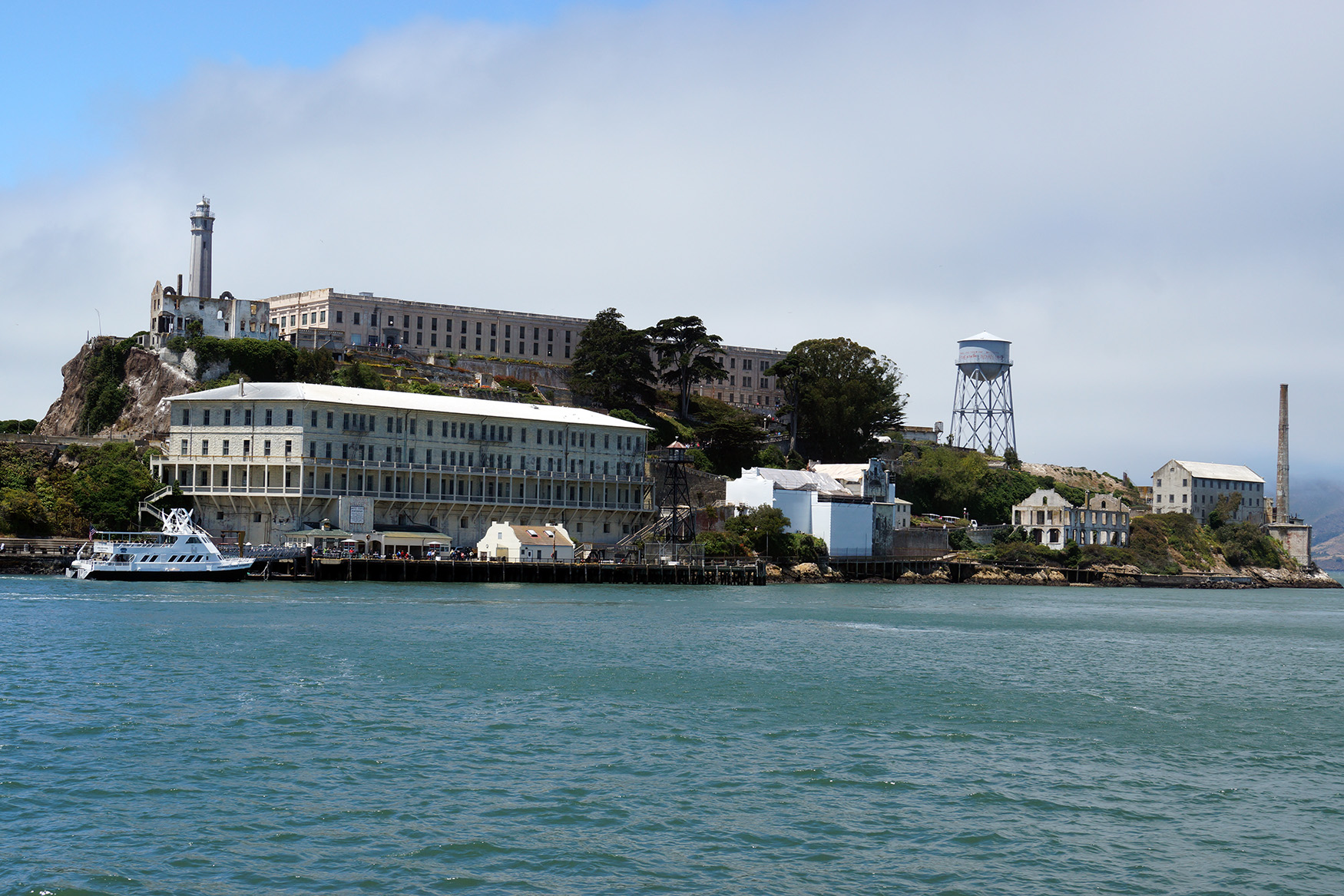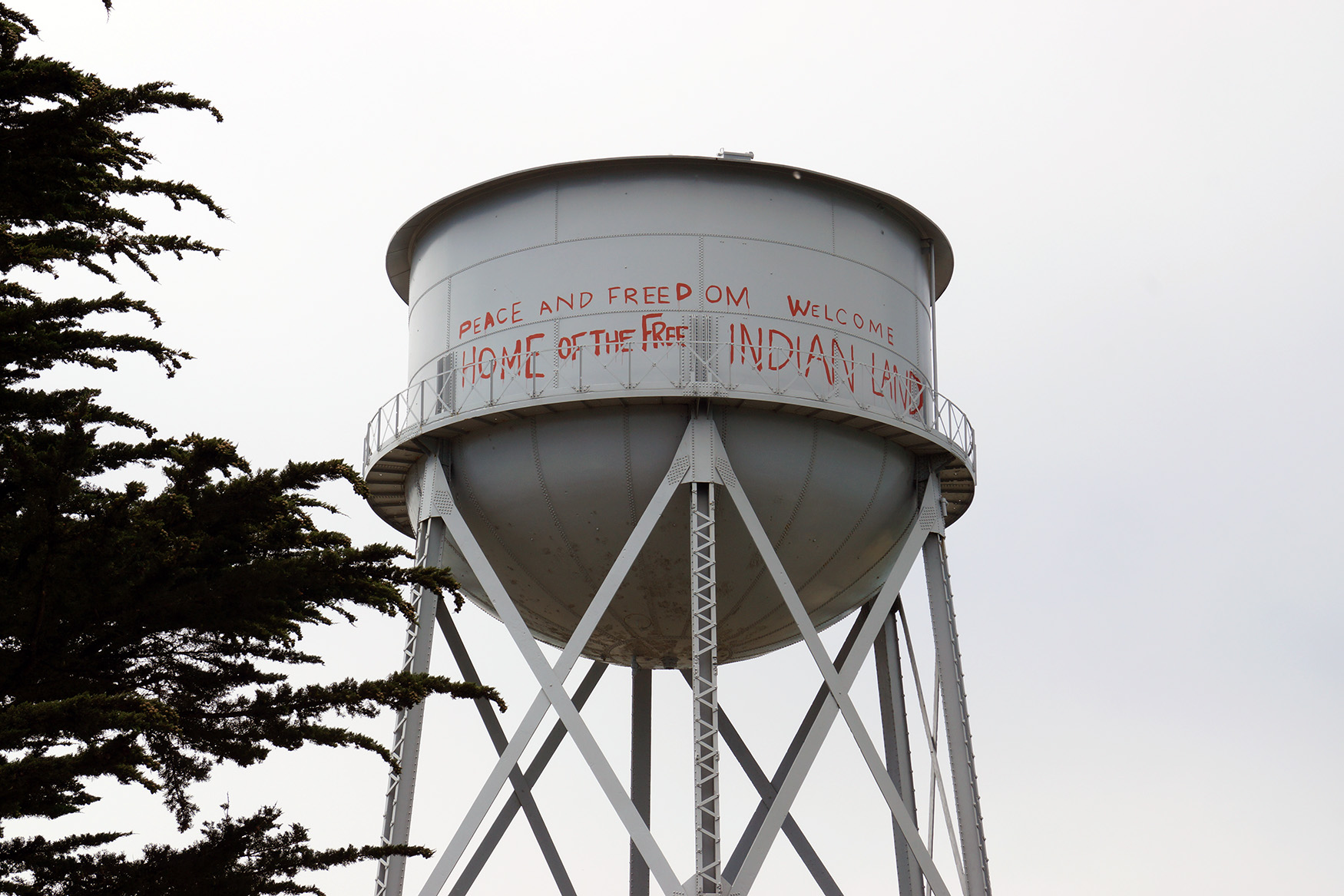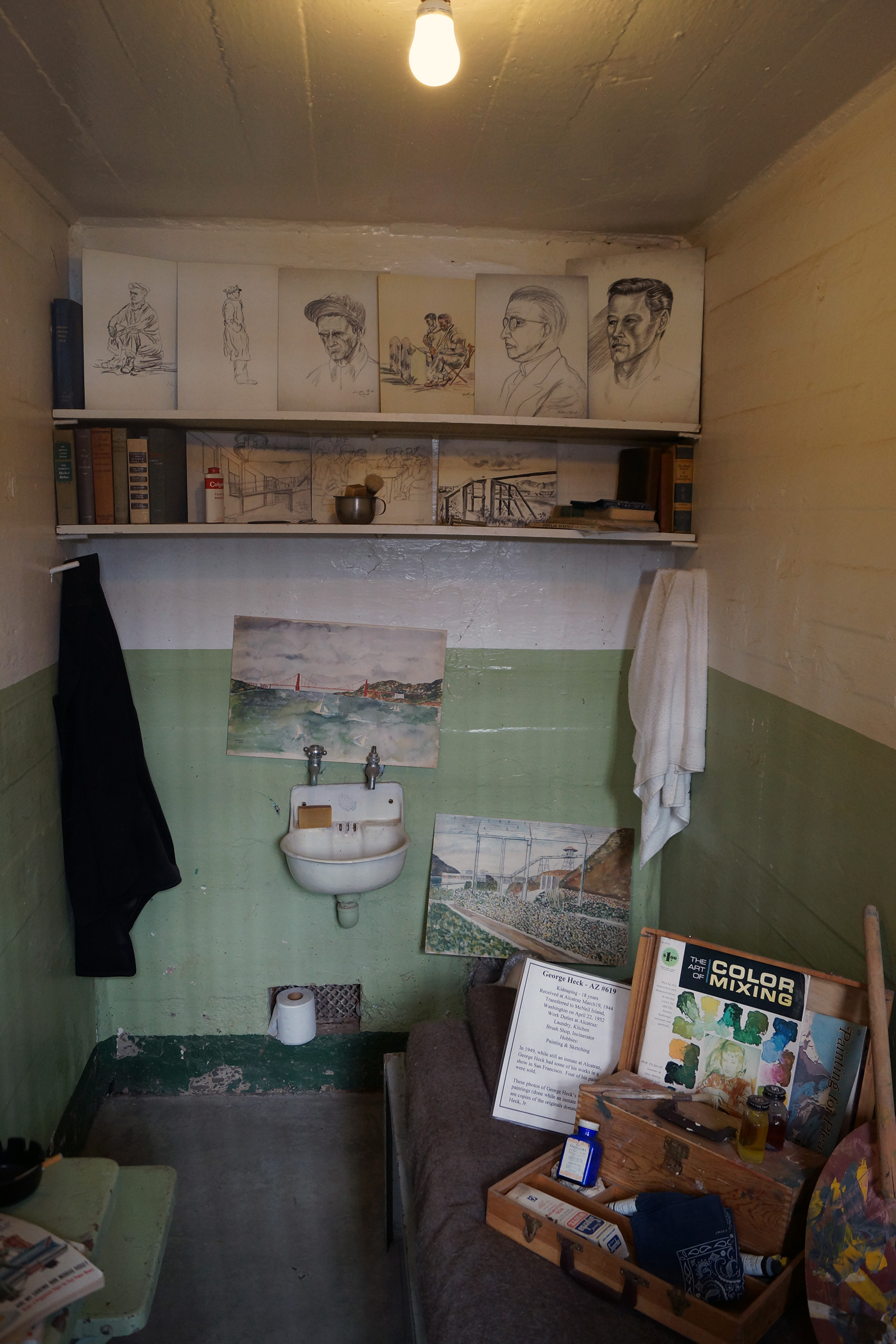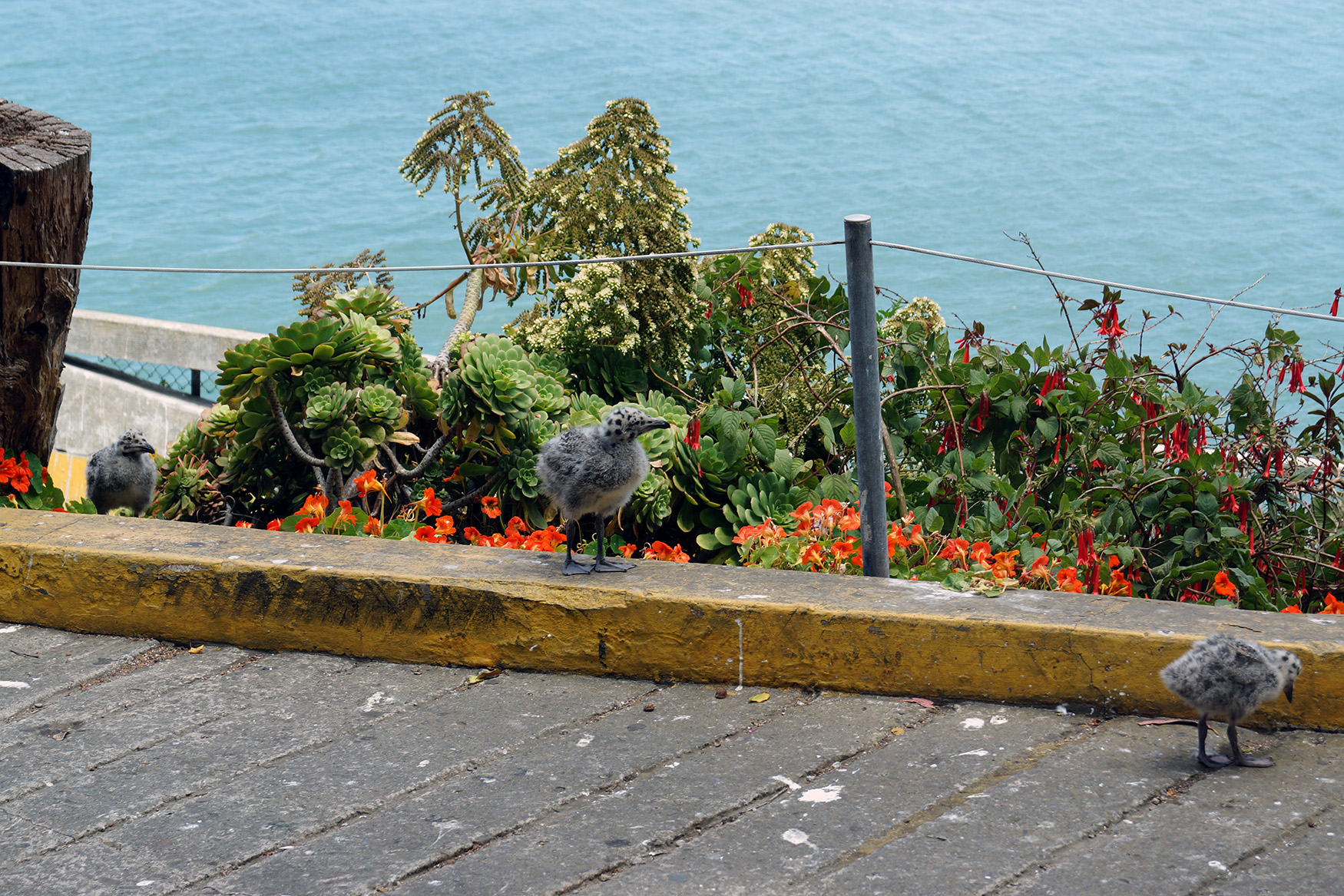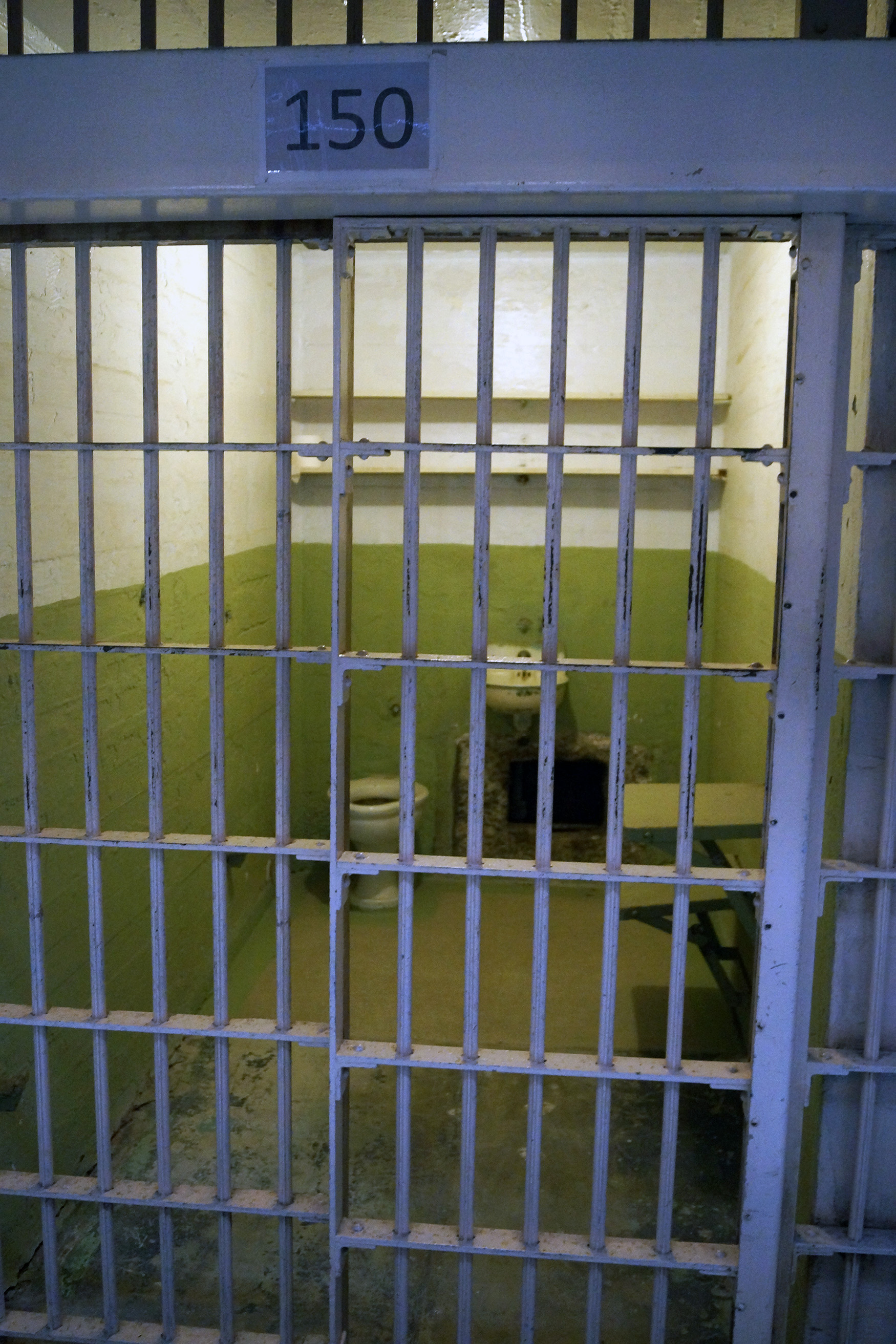Three months ago, my husband and I visited Alcatraz Island during our San Francisco weekend. I keep trying to think of just one word that describes the experience, but I can’t. I can think of several though: intriguing, surprising, foreboding, sad, rich and overwhelming all come to mind.
First of all, the weather was absolutely perfect for our journey. It was cold and wet (misty more than rainy), with winds so powerful I was afraid I would be blown away (quite literally). I admit I had very limited knowledge of Alcatraz before setting out that day. I knew it was an island, which once housed a prison that was shut down several years ago. I knew that Alcatraz supposedly housed the worst of the worst in terms of criminals, but nothing more than this statement. I did not know why it was shutdown, I did not know about the Native American occupation years later and I did not know the actual origin of the island and what it was before the prison. All of these things I went on to learn that day, and more.
Alcatraz is probably best known for being a prison to some of the most notorious criminals of that time, during its tenure as a Federal Penitentiary. I mean it housed people even I have heard of (Al Capone and James “Whitey” Bulger for example). But before that it was a military prison, first used in 1861 for Civil War prisoners. But Alcatraz’s creep factor began before that… Native Americans stayed away from Alcatraz; calling it “Evil Island” they believed it was cursed. (I am curious as to why, but I couldn’t find anything credible to elaborate on specifics.)
Interestingly enough, and moving away from the creep factor, Alcatraz was occupied by Native American activists between 1969 and 1971. More than forty years later, I wonder how many people actually know anything about this (assuming they haven’t already been to the island of course). The sad thing about the occupation was all of the damage to several historical buildings on the island. Several buildings were damaged (and others completely destroyed) by fire, though the cause of those fires are disputed. Landmarks of note that were destroyed include the warden’s home, Coast Guard quarters and the recreation hall. The ruins of some of these buildings still stand, but I wish people were able to see and walk through them, like they are able to with the actual prison.
The prison itself was – wow. I have never been in a prison before, but seeing how small the cells were, with the toilets and broken sinks… it was depressing. I always knew toilets were in a cell and there was no time for modesty and cells were small, etc. but seeing it firsthand made jail so much more real. There were cells that were empty and unchanged and other cells that showed how prisoners arranged their rooms and made the most of their space. The library, the prison yard and all of the other common areas of the prison somehow managed to be as gloomy as the rest of the place, and yet gloom wasn’t the prevailing vibe of the prison.
Alcatraz was a world away from everything, both physically and otherwise. The island itself seems at the mercy of harsh conditions in San Francisco’s bay – it almost seems like a wonder that anything can grow on the hunk of rock, at all. But there are beautiful gardens and all types of fauna and flora that you wouldn’t expect to be there, let alone thrive there. And yet they do. Physically, the idea of a prison on its own island and have that island dedicated to prisoners, the guards and other staff of the prison make the whole ‘other world’ very physical. And that is what this island did, during its penitentiary days.
But the way Alcatraz worked seemed to be different from other prisoners at the time and perhaps still is (I hardly claim to be an expert). In theory, and from what I have read, and learned while on the island itself, etc. Alcatraz was fair. Prisoners were unhappy and restless because they were in prison, rather than being unhappy or restless about being at that particular prison. Prisoners were fed much better than some hospitals feed their patients. Reviewing typical meals, including the last meal served when Alcatraz was still open as a prison was surprising. From the little I gathered, it seemed like Alcatraz implemented a zero tolerance policy that actually worked (I am not big on zero tolerance, but in this kind of environment it seemed to do the trick).
Of course, there were the attempted escapes and riots. It was a prison after all, but after almost three decades as a federal prison with a reputation like Alcatraz’s can anyone be surprised? I’m kind of surprised it wasn’t worse than it was. Not that it wasn’t bad, I mean guards and prisoners died in these attempts, but there weren’t as many as I thought there would be. There are the famous escape stories: those who tried to escape and failed and those who tried to escape and were never seen again. Some people wonder if those who disappeared were successful, but I am in the group who think that they escaped the prison, only to be ‘taken’ by the Pacific. But wow, what an escape plan! (I won’t ruin it for anyone who hasn’t heard of it, there are so many books and movies out there, and the island itself, maybe this will instill a healthy curiosity haha.)
I think if I ever did decide on a single word for this experience, it would be haunting. Walking the halls, going into the cells, seeing what was left and imaging what used to be was tremendous. I can understand all of the ghost stories that swirl around Alcatraz. I mean the place is super creepy. I wouldn’t say that I am a believer, or a skeptic – I fall somewhere in the healthy middle. But walking those halls, it was impossible not to feel something. Maybe I am weird, but when I am at a historical place I feel the echoes of that history. You see it, smell it, take it in – breathe it: it permeates in the air and shimmers invisibly on every surface. It is almost as if you can see and hear what happened all of those years ago from the echoes that are left behind.
-DMW

